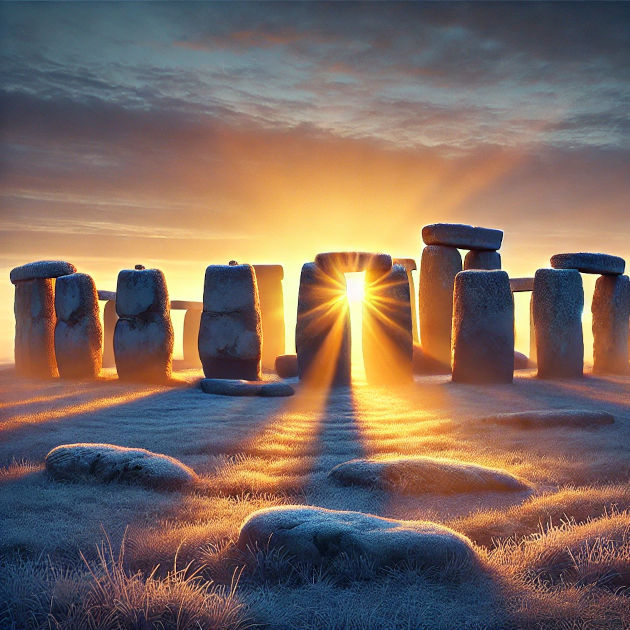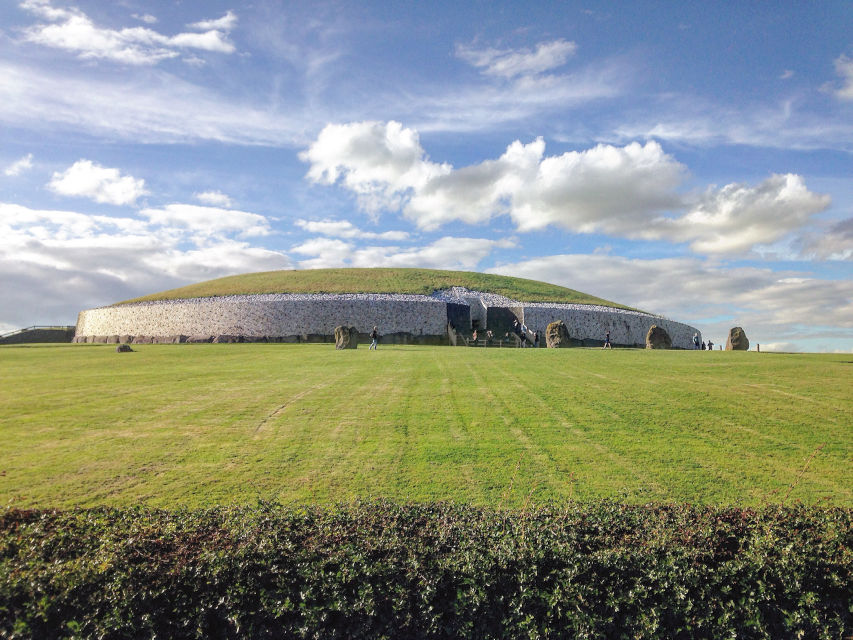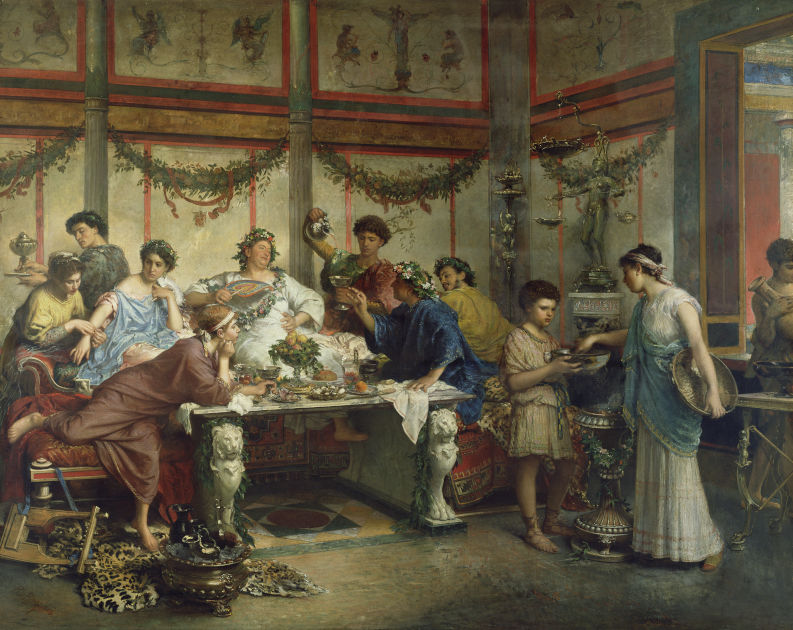The Winter Solstice and its impact upon Ancient Europe
By Christopher Shilts published on .
The sun, bringer of life and warmth. Long has it been worshiped and celebrated throughout the world. I got to wondering, how did our ancestors react to the days getting shorter and colder?
I began my study with Stone Age Ireland, a massive passage tomb called Newgrange, located within the Brú na Bóinne complex in present day County Meath. This magnificent structure was built around 3,200 BC, before Stonehenge and the Great Pyramid of Giza. Its primary entrance is aligned with the sunrise on the winter solstice. Located inside the passage way, and above the ceiling is a roof box, which allows a beam of sunlight to enter on the Winter Solstice, illuminating the hall for approximately 17 minutes.
Newgrange and the Brú na Bóinne complex predates written language. This has made it difficult to ascertain exactly how the winter solstice was observed by this ancient people, but we know it was important to them. Another Neolithic passage tomb called Maeshowe, is located in Scotland. For a few days before and after the winter solstice, the setting sun illuminates the entrance to its back cell. Sites throughout the British Isles appear to have included alignments with the winter solstice.

Saturnalia
Let's fast forward a bit to the Roman era, and talk about the Roman celebration of Saturnalia. This epic festival was held from the 17th to 23rd day of December, to honor the god Saturn, and celebrate the year's agricultural harvests. During the festivities, businesses were closed, and social norms were cast aside. Servants sat at their master's table, and were served by them. Rich and poor alike mingled to play games, drink, and sing songs. It was a jovial time, when the troubles of life were forgotten.
If you will indulge me, I would like to quote some relevant passages from Lucian of Samosata's short story Saturnalia (translated by H.W. Fowler and F.G. Fowler), in which the god Cronus (The Greek version of Saturn) has a conversation with one of his priests.
"Secondly, during my week the serious is barred; no business allowed. Drinking and being drunk, noise and games and dice, appointing of kings and feasting of slaves, singing naked, clapping of tremulous hands, an occasional ducking of corked faces in icy water,—such are the functions over which I preside. Anyhow, there are plenty who get as much as they can eat just because the die likes them and does what it can for them. Others you may see naked, swimming for their lives; and what was the reef that wrecked them, pray? that little die. Or again, to enjoy your wine, to sing the best song at table, at the slaves' feast to see the other waiters ducked for incompetence, while you are acclaimed victor and carry off the sausage prize,—is all that nothing? Or you find yourself absolute monarch by favour of the knucklebone, can have no ridiculous commands laid on you, and can lay them on the rest: one must shout out a libel on himself, another dance naked, or pick up the flute-girl and carry her thrice round the house; how is that for a sample of my open-handedness?... "
"therefore the merry noise on every side, the song and the games; therefore the slave and the free as one."
"and we will make merry and clap our hands and take our holiday licence, play draughts for nuts in the good old way, elect our kings and do them fealty."
As you can see, Saturnalia was a time of revelry and merriment.

Festival of Dies Natalis Solis Invicti
In 274 AD, Emperor Aurelian made December 25th (winter solstice on the Roman calender) the birthday of the god Sol Invictus. In Rome, it appears the sun god's birthday was celebrated with 30 chariot races.
The Christians would later make this day Christmas, keeping some of the festivities from Saturnalia and Dies Natalis Solis Invicti, likely to ease their conversion. The Syrian Orthodox Bishop Dionysius bar Salibi wrote in the 12th century:
It was a custom of the Pagans to celebrate on the same 25 December the birthday of the Sun, at which they kindled lights in token of festivity. In these solemnities and revelries, the Christians also took part. Accordingly, when the doctors of the Church perceived that the Christians had a leaning to this festival, they took counsel and resolved that the true Nativity should be solemnized on that day.
Slavic Korochun
I would like to end with Korochun, from the Slavic lands. Records of these times are scarce, and much of this is speculation. Speaking very broadly, it appears to have been observed during the winter solstice, and had something to do with the old sun god dying, who would be reborn to start a new solar cycle. This appears to be almost an inversion of the Jovial Saturnalia celebrations. A night of fearful watch, featuring burning logs at cross roads, chanting and singing to ward off evil spirits, and lighting fires at the ancestors' graves to keep them warm on the long night. There is also some mention of feasts being organized to honor the dead, although I know not whether this was done at night or after sunrise. With Christianization, Korochun became Koliada, a time of joy and celebration set between Christmas and Epiphany.
